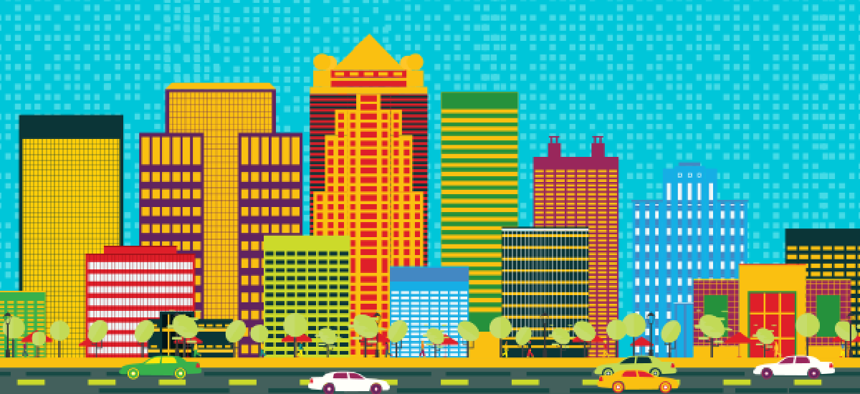Birmingham gets smart


Connecting state and local government leaders
Birmingham, Ala., is building a smart city future -- and is starting to see the fruits of its labor.
In discussions about smart cities, population hubs like New York and Singapore or tech-heavy communities like Palo Alto, Calif., spring to mind. But Birmingham, Ala., has been elbowing past larger metro areas thanks to partnerships with University of Alabama Birmingham and Alabama Power and some consulting help from IBM.
In 2013, the city signed a memorandum of understanding with UAB’s Sustainable Smart Cities Research Center to partner on projects such as energy efficiency and city planning that would help build a more livable city. The MOU gave the city access to a team of experts while the university got a testbed for its research.
A year later Birmingham was one of 16 cities worldwide to win an IBM Smarter City Challenge Grant. The company sent in experts to help city officials devise a strategy to reduce the incidence and impact of food deserts by viewing them as part of a larger system of community investment and economic growth. A final report from IBM gave the city recommendations for improvements, and many have since been put into practice.
To leverage its data to manage traffic congestion, for example, the Birmingham Regional Planning Commission approached UAB -- taking advantage of the MOU -- for help. The Birmingham Regional Transportation Data Center was formed to collect, archive and analyze traffic and congestion data. The center is working on refining the way it obtains and manages traffic counts and travel time information. More data will be gathered as funding becomes available, according to the organization’s website.
While the center addresses one of IBM’s recommendations to create an information sharing platform, other efforts have been around opening data and making it more useful. A hackathon held in the city in 2015 aimed to solve ways to open the city data. Birmingham CIO Srikanth Karra wanted a way to move 30-year-old city data from legacy mainframes to a format that could be accessed by open data software. The Birmingham Land Bank Authority needed help streamlining its system that manages the 6,500 abandoned, blighted and tax-delinquent properties in the Birmingham area.
IBM also provided recommendations on how the city could improve its transit system.
The city’s buses already feature free Wi-Fi, something that larger cities are just now doing. And transit officials plan on making it easier to track buses in real time. A planned traffic study will tell the city if current routes are ones best suited for serving the community. Before changes are made, though, the city needs more data on the number of riders entering and exiting the buses at each stop and other data, Sullivan said.
A new traffic light system is also in the works. It will be able to adapt to traffic flow and communicate via Bluetooth with vehicles that have compatible technology. It will also be able to send messages to the phones of pedestrians, Sullivan said. The technology will allow a handicapped person more time to cross or provide an audible notification for a blind individual. The planning for the system is in the early stages, he said.
The city submitted its plans for improvements to the Department of Transportation’s 2016 Smart City Challenge. Although Birmingham didn’t win the challenge, it still plans to continue with the smart transportation blueprint it described in its application.
While these efforts seem costly, at least one of Birmingham’s smart city projects is expected to save the city millions. Sherri Nielson, the executive administrative assistant to the mayor, said the city is currently placing control systems in all 120 government buildings that will monitor lighting, HVAC and water. The system will report on energy use and identify parts of the systems that break or need to be replaced. The city worked with Alabama Power to complete the project. There will also be a feature that lets office managers turn off printers, vending machines and other non-essential devices at night. Nielson said this system is expected to save the city $120 million annually in energy costs.
Other projects include placing LED lights in street lights and eventually putting free Wi-Fi hotspots in the lights, according to CIO Karra. The city is also considering adding fiber to the city’s network when it digs up and replaces the wiring for lights on the interstate, Nielson said.
An increase in data-driven decision making was IBM’s last recommendation. It said this was necessary to move from planning to action.
And Birmingham has stepped up.
Andrew Sullivan, a civil engineering professor at UAB, told GCN that the days of not enough data are over. “Now we’ve very quickly transitioned to an environment where there is going to be almost too much data,” Sullivan said.
Birmingham wants to be a model for other mid-sized cities to follow when taking on smart city projects, Sullivan said.
“Smaller and medium-sized cities like Birmingham have always struggled with limited budgets,” Sullivan said. “What smart city technologies do is let them be a lot more efficient and spend the funds they do have a lot more wisely.”

NEXT STORY: Troopers use ‘big data’ to predict crash sites




